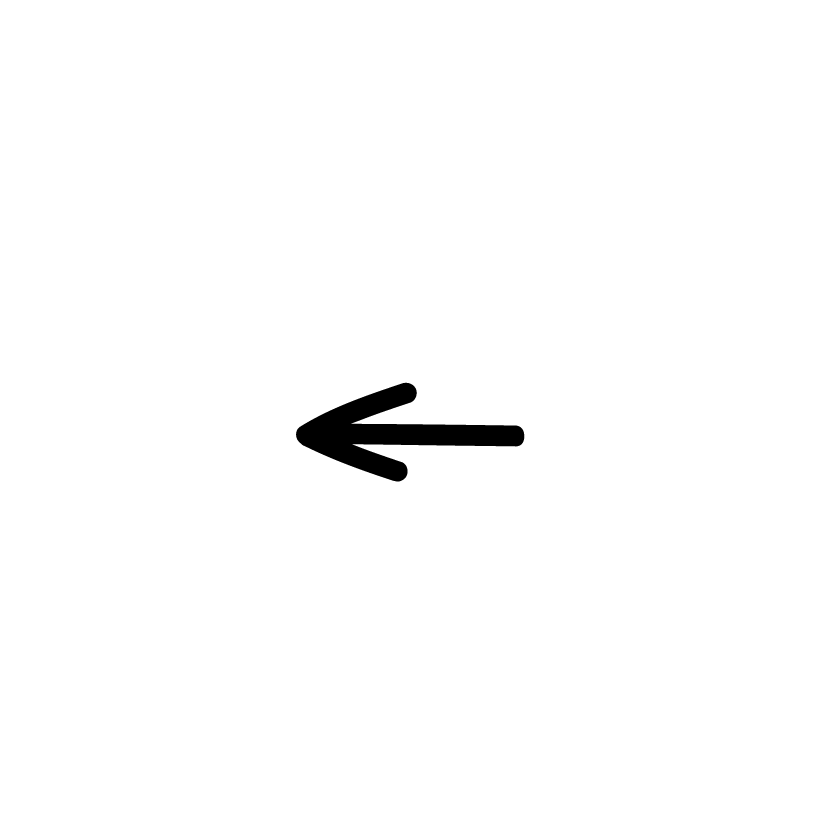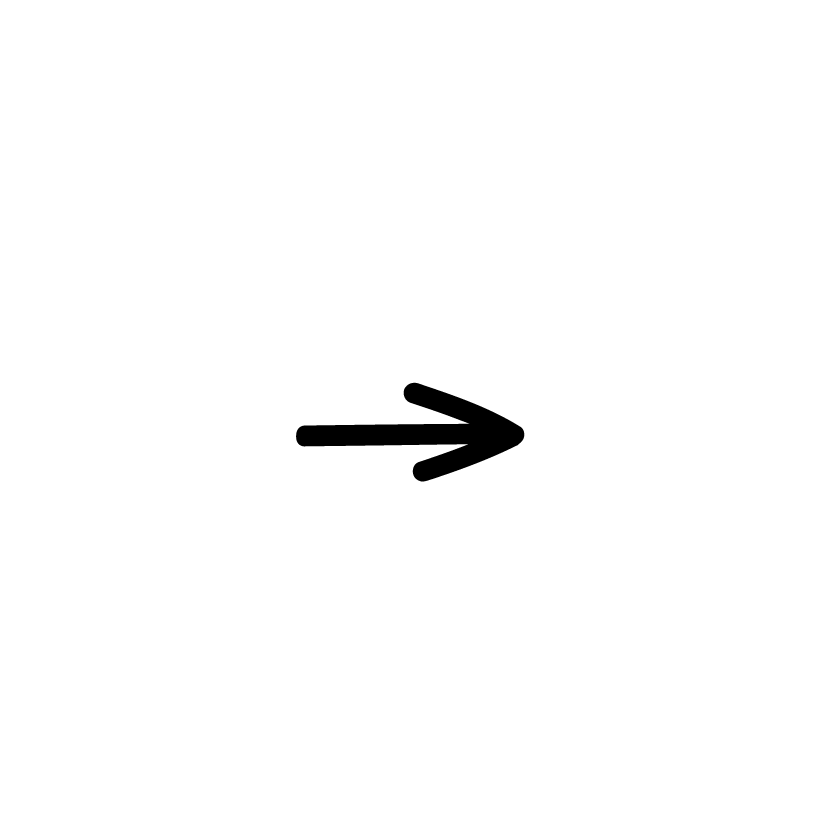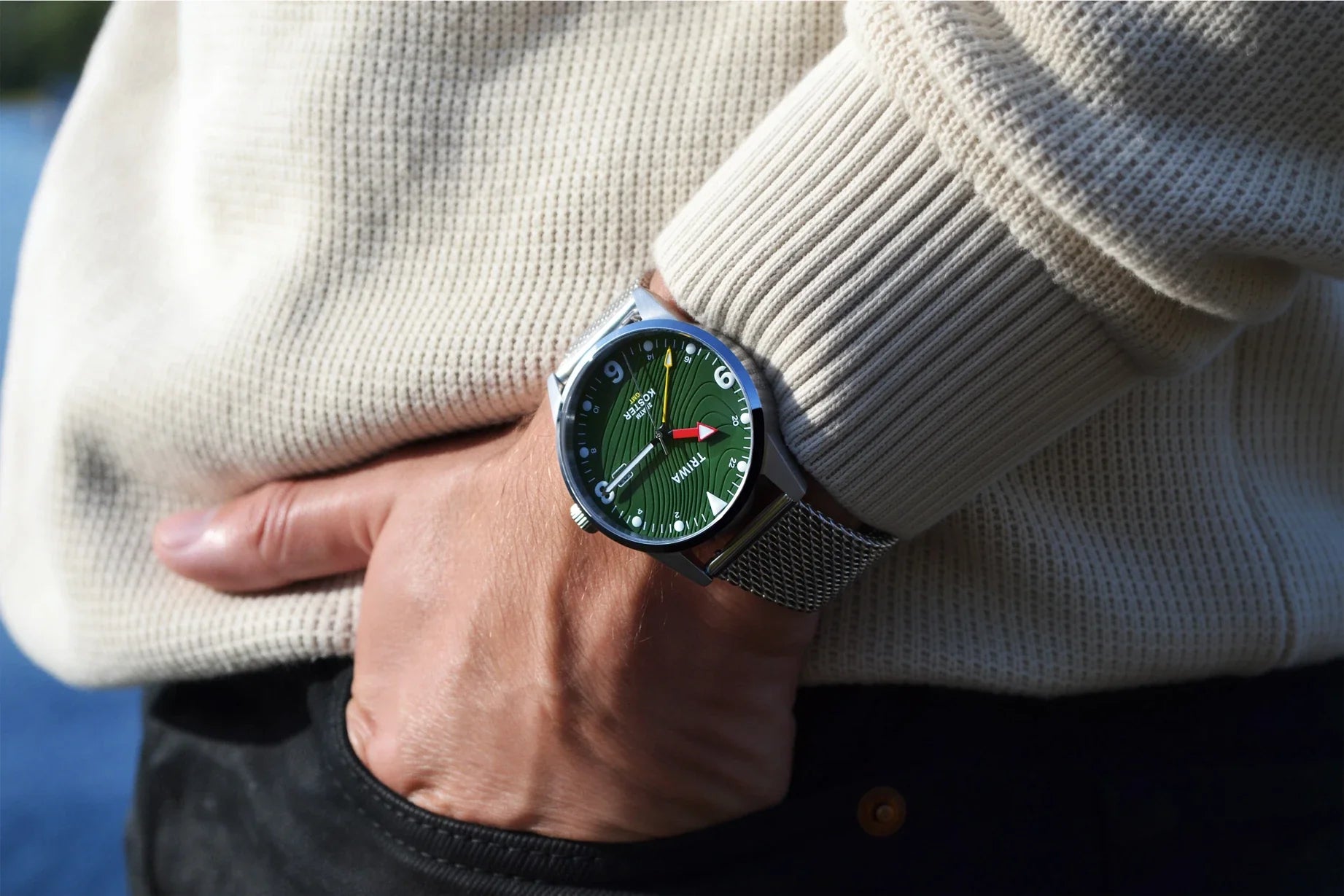
The Ultimate Guide to Finding the Best Sustainable Watches
Let me guess. Your new year’s resolution was to be a better human…
Eat clean, exercise more, make conscious choices, and try a sustainable way of life. You now carefully read labels before buying anything and know better than to get stuff full of plastics.
Organic linen is replacing polyester in outfits, backpacks are made of paper leather, and you prefer bamboo toothbrushes over plastic ones. But what about that little time-telling, planet-trashing device sitting on your wrist?
Yes, we’re talking about your watch.
What if you could swap your conventional watch with sustainable watches that are trendy, stylish, and environmentally responsible? That’s what this article is all about.
This guide will take you through everything you need to know about eco-friendly watches, how to choose the best one, and where to find sustainable watch companies that align with your values.
What Makes a Watch Sustainable?
Before we dive into the best brands and buying tips, let’s break down what actually makes a watch sustainable. Spoiler alert: It’s more than just slapping a “green” label on it.
-
Eco-friendly materials
Most traditional watches rely on virgin metals (which require destructive mining) and genuine leather straps (which contribute to deforestation and excessive water consumption). A single gold ring (let alone a watch!) produces over 20 tons of toxic waste. Now imagine that multiplied across millions of watches. Not exactly a timeless choice.
But don’t worry! We have a list of materials that are eco-conscious and make the most divine watches:
-
Recycled metals – Stainless steel, titanium, and even gold that’s been reclaimed and repurposed.
-
Ocean plastics – Salvaged waste from the sea, transformed into sleek watch casings and straps.
-
Wood & bamboo – Biodegradable and lightweight alternatives, often sourced from responsibly managed forests.
-
Vegan leather – A cruelty-free option made from apple peels, cactus fibers, or cork.
Interested in getting a watch made out of recycled ocean plastic? Check the Ocean Plastic Timer, available in black and blue:
-
Ethical Sourcing
A truly sustainable watch isn’t just kind to the planet—it’s kind to people, too. Ethical sourcing ensures that:
-
Workers in the supply chain receive fair wages and safe working conditions.
-
No child labor or exploitative sweatshop practices are involved.
-
Materials (like metals and diamonds) are conflict-free and responsibly mined.
Brands that cut corners often rely on sweatshops, where workers (including children) toil in dangerous conditions for next to nothing. In the mining sector, it’s even worse—metal and gemstones extraction has been linked to forced labor and violent conflicts.
-
Repairability & Longevity
Cheap, mass-produced watches are designed to break down quickly, making it cheaper to toss them than repair them. The result? Millions of watches (many with non-biodegradable parts) clogging up landfills each year.
A sustainable watch should be:
-
Well-made with durable components—so it lasts for years, not just a season.
-
Designed to be repaired, with replaceable batteries and parts.
-
Free from planned obsolescence, meaning it won’t mysteriously break right after the warranty expires.
-
Minimal Carbon Footprint
Manufacturing a single luxury watch can produce dozens of kilograms of CO₂ emissions. Some brands even transport parts across multiple continents before assembling the final product, creating a huge carbon footprint.
Choose sustainable watch brands that actively reduce their carbon emissions by:
-
Using solar-powered or energy-efficient production methods.
-
Offsetting emissions by planting trees or investing in clean energy.
-
Shipping in minimal, carbon-neutral packaging.
-
Recyclable & Minimal Packaging
A truly sustainable brand prioritizes packaging that’s either 100% recyclable or designed for reusability—because every little choice adds up.
The best brands avoid:
❌ Plastic-heavy boxes that just add to waste.
❌ Excessive wrapping & foam inserts (looking at you, luxury brands).
The Environmental Impact of Conventional Watches
The watch industry has a dirty little secret. Many traditional timepieces rely on mining, toxic chemicals, and wasteful production methods that harm the planet.
Those flashy Instagram reels appearing in your feed promoting luxury Rolex and Timex watches? It turns out they are one of the reasons we are facing one climate hazard after another worldwide.
And you don’t have to take our word for it. Check these not-so-fun facts:
-
Extracting raw materials for watch cases has severe environmental consequences, including air and water contamination, soil erosion, land displacement, and deforestation. These disruptions not only degrade ecosystems but also threaten freshwater sources, forests, and wildlife, leading to long-term ecological imbalances. (Source)
-
Annually, the watch and jewelry industry accounts for over half of the world's gold consumption, exceeding 2,000 tonnes, and utilizes approximately 67% of newly mined rough diamonds, totaling around 90 million carats. (Source)
-
Mining is considered one of the most dangerous industries worldwide, especially when factoring in the number of workers exposed to risk. Despite making up just 1% of the global workforce, the sector is linked to approximately 8% of all workplace fatalities. (Source)
-
Mining is one of the main reasons for mercury pollution, a highly toxic substance polluting freshwater lakes and endangering animals and humans alike. (Source)
-
Among the 12 Swiss watch companies evaluated, five lacked a clear and transparent environmental management strategy, with no established methods to assess or mitigate their ecological impact. (Source)
The good news? There’s a better way! Sustainable watch companies like Triwa are stepping up their game, offering eco-friendly alternatives without sacrificing quality or style.
Top Sustainable Watch Brands You Need to Know
If you're on the hunt for a stylish sustainable watch, you're in luck! Some brands are stepping up their game, proving that you don’t have to choose between looking good and doing good for the planet. Whether you're into high-end luxury or affordable everyday wear, here are some of the best eco-friendly watch companies making waves in the industry.
Best Luxury Sustainable Watch Brands
⏳ IWC Schaffhausen – Swiss Precision with a Green Heart
IWC Schaffhausen isn’t just about fine Swiss craftsmanship—it’s also one of the most eco-conscious luxury watch brands out there. According to the WWF Environmental Rating and Industry Report 2018, IWC scored an "Ambitious" rating, meaning it's doing a lot right but still has room to grow.
The company has been committed to sustainability for over two decades, with a clear focus on reducing its carbon footprint, using responsibly sourced materials, and increasing transparency. They even publish a sustainability report following the Global Reporting Initiative (GRI) standards—fancy talk for “they take sustainability seriously.”
That said, there's still work to do, especially when it comes to sourcing raw materials responsibly and further minimizing their environmental impact. But compared to many traditional watchmakers, IWC is definitely leading the way.
💎 Cartier – Luxury Meets Responsibility
Cartier, one of the biggest names in luxury watches and jewelry, is also making strides in sustainability. As part of the Richemont Group, Cartier benefits from corporate-wide initiatives that focus on ethical sourcing and eco-friendly production.
The WWF report highlights that while Cartier is on the right track, the luxury watch industry as a whole still faces big challenges. More transparency is needed in gold and diamond sourcing, and there’s still progress to be made in reducing the industry's overall carbon footprint.
But hey, if you’re looking for a high-end watch from a brand that’s at least making an effort, Cartier is a solid choice.
Best Affordable Sustainable Watches
🌊 Triwa – Sustainability Without Sacrificing Style
If you think sustainability means compromising on style, think again. Triwa, a Swedish watch brand, is proving that you can look good and feel good about what’s on your wrist.
Triwa is all about transparency—they even use the 2030 Calculator to measure the carbon footprint of every single watch. This means they’re looking at everything: materials, packaging, transportation, and manufacturing energy use. They even hold The 2030 Certification by Doconomy, proving their commitment to reducing environmental impact.
And the best part? Their most stylish Sea Shepherd collection is donating 22% of their sales towards ocean conservation. So if you want an eco-friendly watch that doesn’t scream “I’m made from recycled trash” but still does its part for the planet, Triwa is the way to go.
How to Choose the Best Sustainable Watch for You?
So, you've decided to ditch wasteful, mass-produced watches and invest in something sustainable and stylish—awesome choice! But with so many options out there, how do you pick the right one? No worries, I’ve got you covered. Here’s a step-by-step guide to finding a sustainable watch that matches your lifestyle, budget, and values.
1. Find Your Style: What’s Your Vibe?
Your watch should be a reflection of who you are and how you live. The good news? There’s a sustainable watch for every personality type.
|
The Minimalist: Love clean lines, neutral colors, and simple elegance? Go for a Scandinavian-inspired design made with recycled stainless steel or ocean plastics. Brands like Triwa are killing it in this space. |
|
|
The Adventurer: If you're always on the go, hiking, diving, or just braving the elements, opt for a rugged, water-resistant watch made from durable and eco-friendly materials like titanium or recycled metals. Bonus points for solar-powered models that don’t rely on disposable batteries! |
|
|
The Trendsetter: Want to make a statement? Choose a bold, fashion-forward timepiece made from unique sustainable materials like recycled ocean nylon or watches made from destroyed illegal firearms. |
|
👉 Pro Tip: A watch is an investment, so make sure it’s a design you’ll love for years to come—not just something trendy that’ll be outdated next season.
2. Set a Budget: Sustainable Doesn’t Have to Mean Expensive
There’s a common myth that eco-friendly watches are way more expensive than regular ones. While it’s true that handcrafted, ethically sourced timepieces can cost more, there are plenty of affordable options out there.
Here’s what to expect at different price points:
💰 $100 - $300: Solid entry-level sustainable watches with recycled materials and ethical production. Great for everyday wear! (Think: Triwa, Solios, or Nordgreen.)
💰💰 $300 - $700: Premium materials like recycled metals, sapphire crystal glass, and solar-powered movements. These watches balance durability, function, and sustainability. (Think: Garmin Solar or Junghans Solar.)
💰💰💰 $700+: Luxury brands using high-end sustainable materials, artisanal craftsmanship, and ethical gold sourcing. These watches are designed to last a lifetime and can even become heirlooms. (Think: IWC, Cartier, Panerai.)
3. Choose the Right Strap: Small Details, Big Impact
A watch strap might seem like a minor detail, but it actually plays a huge role in sustainability. The wrong strap could mean harmful production practices, animal cruelty, or non-recyclable materials. The right strap? An eco-friendly statement.
Here are your best sustainable strap options:
Vegan Leather: Made from apple peels, cactus fibers, or cork. Looks just like real leather—without harming animals or the planet.
Recycled Ocean Plastic: Helps clean up the oceans while looking sleek and modern.
Recycled Nylon & Fabrics: Strong, durable, and gives new life to discarded materials.
Wood & Bamboo: A natural, biodegradable alternative with a unique, earthy aesthetic.
👉 Pro Tip: Make sure your strap is replaceable—this extends the life of your watch and reduces waste.
Apple Watch Sustainability: Is It Really Eco-Friendly?
Alright, let’s talk about smartwatches—specifically, the Apple Watch. With its slick design and cutting-edge tech, it’s a fan favorite. But is it actually a sustainable choice?
What Apple’s Doing Right:
✔️ Recycled Materials – Apple has increased the use of recycled materials across its products. In 2021, nearly 20% of all materials used in Apple products were recycled, marking the highest-ever use of recycled content..
✔️ Carbon Neutral Goals – Apple is committed to achieving carbon neutrality across its entire business, manufacturing supply chain, and product life cycle by 2030. The company has already achieved carbon neutrality for its global corporate operations and is working towards extending this to all aspects of its business.
Notably, the titanium Apple Watch Series 10 is carbon neutral, made with 95% recycled titanium, and manufactured using renewable energy sources.
✔️ Eco-Friendly Packaging – The company has been progressively reducing plastic usage in its packaging and increasing the use of recycled materials..
Where Apple Falls Short:
❌ Frequent Model Updates = More E-Waste – Apple releases a new model every year, making older versions obsolete faster.
❌ Non-Replaceable Batteries – Once the battery dies, most people replace the whole watch instead of repairing it.
❌ Short Lifespan – Unlike traditional watches that last decades, many smartwatches become outdated within 5 years.
Final Verdict: If you already own an Apple Watch, the best thing you can do is keep using it for as long as possible. If you’re buying a new smartwatch, consider a longer-lasting, repairable model to cut down on waste.
How to Tell If a Watch Brand Is Truly Sustainable (Or Just Greenwashing You)
These days, everyone’s slapping the word “sustainable” on their products. But is that fancy new eco-friendly watch actually good for the planet—or is it just a marketing gimmick?
Greenwashing (aka making false or misleading eco-friendly claims) is a huge problem. So before you drop your hard-earned money on a so-called sustainable watch, here’s how to make sure the brand is the real deal.
1. Check for Legit Certifications (Not Just Fancy Words)
If a brand is actually committed to sustainability, they’ll have certifications to back it up. Look for industry-recognized labels like:
-
FSC (Forest Stewardship Council) – If the watch has wooden parts, this ensures the wood comes from responsibly managed forests.
-
Fair Trade – Guarantees ethical labor practices and fair wages for workers involved in the supply chain.
-
Carbon Neutral Certification – Confirms the brand is offsetting its carbon emissions through renewable energy, tree planting, or other initiatives.
-
B Corp Certification – This is the gold standard for companies balancing profit with environmental and social responsibility.
🚩 Red Flag Alert: If a brand uses vague terms like “eco-friendly” or “green” but doesn’t list any certifications, be skeptical!
2. Read the Brand’s Sustainability Report (If They Have One)
A truly sustainable brand doesn’t just talk the talk—they share real data on their impact. Most ethical companies publish annual sustainability reports that detail things like:
-
How much CO₂ they produce (and how they reduce it?
-
What percentage of their materials are recycled or sustainably sourced
-
Their energy use and renewable energy initiatives
-
Their labor and supply chain ethics
You’ll usually find these reports on a brand’s website, under their sustainability or corporate responsibility section.
🚩 Red Flag Alert: If a company claims to be sustainable but offers no proof, no numbers, and no clear goals, it’s probably just greenwashing.
3. Check Customer Reviews and Independent Watch Blogs
Let’s be real—customers don’t hold back when a brand isn’t living up to its sustainability claims.
-
Search for reviews on sites like Trustpilot, Reddit, or sustainable fashion forums.
-
Look for independent watch blogs that test and review sustainable watches (not just the company’s own website).
-
See if the brand has had any controversies—like being caught lying about their materials or labor practices.
🚩 Red Flag Alert: If a brand has lots of vague 5-star reviews that seem fake, but independent reviewers say otherwise, something’s fishy.
The Future of Sustainability in Watchmaking: Where Are We Headed?
Sustainability in the watch industry is no longer just a niche trend—it’s becoming the new standard. With growing consumer demand for eco-friendly and ethical products, watchmakers are pushing boundaries and coming up with smarter, greener, and longer-lasting designs. So, what does the future hold? Let’s take a peek.
1. Solar-Powered and Kinetic Watches Are Taking Over
One of the biggest game-changers in sustainable watchmaking is the shift towards self-sustaining energy sources. Instead of relying on disposable batteries, more brands are rolling out:
Solar-powered watches – These absorb light (natural or artificial) to power the movement, eliminating battery waste. Brands like Citizen (Eco-Drive) and Seiko (Solar) are leading the way.
Kinetic watches – These harness energy from your wrist’s movement, turning your daily motion into power. No charging, no waste—just pure, efficient energy use!
Mechanical & automatic watches – Powered by gears and springs, these traditional timepieces never need a battery and can last generations with proper care.
👉 Why it matters: Millions of quartz watches with toxic lithium-ion batteries end up in landfills every year. The more brands switch to renewable energy sources, the less electronic waste we produce.
2. Biodegradable and Upcycled Materials Are the New Normal
Luxury and affordable brands alike are getting creative with eco-conscious materials. In the coming years, expect to see more:
Fossil-free stainless steel – Reduces fossil fuel replenishing and transforms innovative steel into sleek, durable timepieces.
Plant-based alternatives – Think cactus leather straps, wood dials, and bio-based plastics made from corn or sugarcane.
Ocean plastic watches – Brands like Triwa are already making waves (literally!) by transforming discarded marine plastic into stylish, high-quality watches.
👉 Why it matters: The watch industry has historically relied on virgin materials, causing deforestation, pollution, and habitat destruction. Swapping to recycled and biodegradable materials helps reduce waste and carbon footprints.
3. Repairability and Modular Designs Are on the Rise
One of the biggest sustainability challenges in the watch world? Planned obsolescence—aka making products that are meant to break so you have to replace them. But that’s changing.
Modular watch designs – Some brands are designing watches with interchangeable parts, so you can swap out straps, bezels, and even internal components instead of replacing the whole thing.
Repair-friendly models – More brands are prioritizing easily replaceable batteries, dials, and hands, making repairs simpler and extending the lifespan of each watch.
Right to Repair Movement – This growing movement is pushing brands to provide repair guides, spare parts, and long-term support, so consumers can fix their watches instead of throwing them away.
👉 Why it matters: The less we replace, the less waste we create. A watch that lasts 20+ years is far better than one that falls apart in 2 years.
4. The Push for Carbon-Neutral and Ethical Watchmaking
Sustainability isn’t just about materials—it’s about the entire production process. More brands are committing to:
Carbon-neutral manufacturing – Companies like IWC Schaffhausen and Cartier are investing in renewable energy and carbon offsets to reduce their environmental impact.
Fair-trade labor practices – Ethical sourcing is becoming a big priority, ensuring that workers are paid fairly and work in safe conditions.
Innovation in eco-friendly production – Expect to see more brands using 3D printing, green energy, and zero-waste manufacturing to minimize their environmental footprint.
👉 Why it matters: A truly sustainable watch isn’t just about what it’s made of—it’s about how and where it’s made.
FAQs About Sustainable Watches
We know sustainability can be a big, complicated topic, so here are some quick answers to the most common questions.
Q: Are sustainable watches more expensive?
💰 Not necessarily! While some luxury brands charge more for high-quality sustainable materials, there are plenty of affordable options under $200—like Triwa that offers both eco-friendly features and great design.
Q: Can I get a sustainable smartwatch?
Absolutely! While smartwatches aren’t the most sustainable (due to short lifespans and electronic waste), some brands are making greener choices, such as:
-
Garmin Solar Series – Uses solar charging, reducing the need for frequent charging.
-
Apple Watch (to some extent) – Newer Apple Watches are made with recycled materials, and Apple has pledged carbon neutrality by 2030.
Q: Are recycled materials as durable as new ones?
Yes! Recycled metals like stainless steel and titanium are just as strong as virgin metals. Plus, brands are testing and refining eco-friendly materials to ensure they match the durability of traditional materials.
Q: What should I do with my old watch if I want to switch to a sustainable one?
Great question! Instead of tossing it in the trash:
-
Recycle it – Some brands offer take-back programs to responsibly dispose of old watches.
-
Donate it – Many charities accept working watches for resale or donation.
-
Repair or repurpose it – If the watch still works (or just needs a fix), consider repairing it instead of replacing it!
Conclusion: It’s Time to Make a Greener Choice
Your watch isn’t just about telling time—it’s about telling a story. And what better story to tell than one that supports sustainability, ethical production, and long-term durability?
By choosing a sustainable watch, you’re not just making a style statement—you’re making a statement that you care about the planet, fair labor, and reducing waste.
So, what’s next?
Do your research on brands that prioritize sustainability.
Choose a watch that fits your lifestyle and values.
Take care of your watch so it lasts for years.
Ready to explore some of the best sustainable watches? Check them out here!
Because every second counts—let’s make them sustainable.






